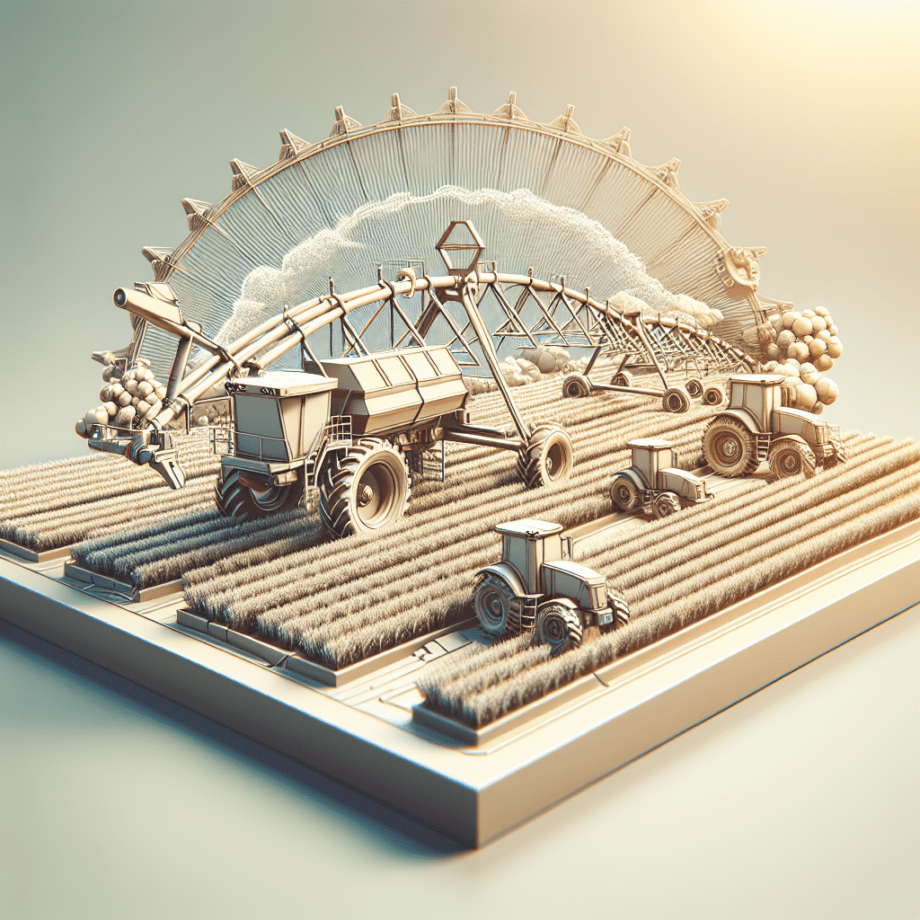Irrigation machinery plays a crucial role in modern agriculture, ensuring that crops receive the necessary water to grow and thrive. Selecting the right irrigation system for your fields can significantly impact crop yield, water usage efficiency, and overall farm productivity. This article delves into the various types of irrigation machinery available, their benefits, and how to choose the best system for your specific needs.
Types of Irrigation Systems
There are several types of irrigation systems, each with its own set of advantages and disadvantages. Understanding these systems can help farmers make informed decisions about which one is best suited for their fields.
Surface Irrigation
Surface irrigation is one of the oldest and most common methods of irrigation. It involves distributing water over the soil surface by gravity. This method includes furrow, basin, and border strip irrigation.
- Furrow Irrigation: Water is directed into small channels or furrows between crop rows. This method is suitable for row crops like corn and soybeans.
- Basin Irrigation: Water is applied to flat basins surrounded by levees. This method is often used for rice paddies.
- Border Strip Irrigation: Water flows down narrow strips of land bordered by levees. This method is ideal for pastures and forage crops.
While surface irrigation is cost-effective and easy to implement, it can lead to water wastage and uneven distribution if not managed properly.
Sprinkler Irrigation
Sprinkler irrigation systems mimic natural rainfall by distributing water through a network of pipes and sprinklers. These systems can be stationary or mobile, and they are suitable for a wide range of crops and field sizes.
- Center Pivot Systems: These systems consist of a central pivot point and a long arm that rotates around the field, spraying water uniformly. They are highly efficient and suitable for large fields.
- Linear Move Systems: Similar to center pivot systems, but they move in a straight line across the field. They are ideal for rectangular fields.
- Portable Sprinkler Systems: These systems can be moved from one location to another, making them versatile and suitable for smaller fields or irregularly shaped plots.
Sprinkler irrigation systems offer precise water application and can be automated, but they require a significant initial investment and regular maintenance.
Drip Irrigation
Drip irrigation, also known as micro-irrigation, delivers water directly to the root zone of plants through a network of tubes, pipes, and emitters. This method is highly efficient and reduces water wastage.
- Surface Drip Irrigation: Emitters are placed on the soil surface, making it easy to monitor and maintain. This method is suitable for row crops and orchards.
- Subsurface Drip Irrigation: Emitters are buried below the soil surface, reducing evaporation and water loss. This method is ideal for high-value crops and areas with limited water supply.
Drip irrigation systems are highly efficient and can be tailored to specific crop needs, but they require careful planning and regular maintenance to prevent clogging and ensure uniform water distribution.
Factors to Consider When Choosing an Irrigation System
Selecting the right irrigation system involves considering several factors, including crop type, soil characteristics, water availability, and budget. Here are some key considerations to keep in mind:
Crop Type
Different crops have varying water requirements and tolerances. For example, row crops like corn and soybeans may benefit from furrow or sprinkler irrigation, while high-value crops like fruits and vegetables may require the precision of drip irrigation. Understanding the specific needs of your crops is essential for choosing the right system.
Soil Characteristics
Soil type and structure can significantly impact the efficiency of an irrigation system. Sandy soils, for instance, have high infiltration rates and may require frequent, low-volume irrigation, making drip systems ideal. Clay soils, on the other hand, have low infiltration rates and may benefit from surface or sprinkler irrigation methods that apply water more slowly.
Water Availability
The availability and quality of water resources are critical factors in selecting an irrigation system. In areas with limited water supply, efficient systems like drip irrigation can help conserve water. Additionally, the quality of water, including its salinity and presence of contaminants, can affect the choice of irrigation method and the need for filtration and treatment systems.
Field Size and Shape
The size and shape of your fields can influence the suitability of different irrigation systems. Large, uniform fields may be well-suited for center pivot or linear move systems, while smaller or irregularly shaped fields may benefit from portable sprinkler or drip irrigation systems. Consider the layout of your fields and the ease of installation and operation when choosing an irrigation method.
Budget and Cost
The initial investment and ongoing operational costs of an irrigation system are important considerations. Surface irrigation methods are generally less expensive to install but may require more labor and management. Sprinkler and drip systems have higher upfront costs but offer greater efficiency and automation, potentially reducing labor and water costs over time. Evaluate your budget and long-term financial goals when selecting an irrigation system.
Conclusion
Choosing the right irrigation system for your fields is a critical decision that can impact crop yield, water usage, and overall farm productivity. By understanding the different types of irrigation systems and considering factors such as crop type, soil characteristics, water availability, field size, and budget, farmers can make informed choices that optimize their irrigation practices. Investing in the right irrigation machinery not only enhances agricultural efficiency but also contributes to sustainable water management and long-term farm success.
